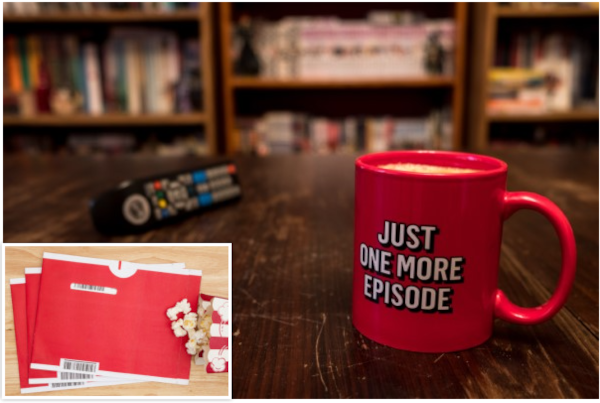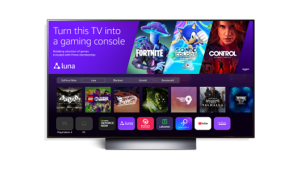Red’s Last Mail Drop

Subscribers to the Netflix subsidiary, known as DVD.com, will receive their last monthly bill in August, and the company will accept returned discs until October 27. User subscriptions will be automatically cancelled. People with a streaming subscription will not be affected.
As for the personal information that Netflix has collected, the company says it will delete your queue, rental and shipping history, ratings, reviews and taste preferences. Preserved data will include your name and login, DVD billing history and charges for unreturned discs.
In its email, Netflix encouraged users to download their DVD history here. “As a keepsake of our time together, this personalized PDF contains your queue, rental history, ratings, and reviews.” My own list contains nearly 3,000 titles.
Many subscribers took the news about the service’s demise personally, some experiencing the five stages of grief. In my case, I’d been a customer ever since Marc Randolph, Netflix’s cofounder and first CEO, dropped by Video Magazine (predecessor to S&V) in 1998 to promote the startup. At the time I was working on an article comparing various websites that enabled you to buy or rent VHS tapes and DVDs. In its first iteration, Netflix discs were available à la carte, and they were distributed from the company’s one warehouse in Northern California.
Competitors were certain that Netflix would be out of business within six months. How could the company sustain the 10-day turnaround (at best) of renting discs to customers on the East Coast while maintaining a sufficient inventory of the most popular titles? Even Netflix realized its business plan was unsustainable. It offered to sell itself to Blockbuster for $50 million, which the video chain turned down.
So, Netflix was forced to revise its model. It changed to a monthly subscription plan, guaranteeing regular cash flow. It added regional hubs to expedite delivery. It made deals with studios to stock more copies of hit movies. It also made deals with DVD player manufacturers to bundle promotional cards offering free rentals to attract subscribers.
Randolph told me in a 2015 email: "We almost didn't survive the early years. There were many times when we were sure we were going to have to close. We just couldn’t make the economics of the business work. It wasn't until we finally (in desperation) tested three concepts at the same time — subscription billing, the Queue, and the unlimited rental program — that we finally had a product that we could deliver for less than what people were willing to pay.”
Netflix built its business, in part, on the honor system. It depended on customers returning discs and not abusing a feature that allowed them to click on a claim that they had already returned it or hadn’t received the title (in which case Netflix would send out a replacement within a day). But users would also try to push the limits of the system. With a three-disc plan, I set a personal best of unsealing 24 envelopes in one month.
Netflix customers thrived on anticipation. They’d time a return for receipt by Netflix on Monday, to get a just-released title on Tuesday. Netflix alerted customers by email and in their queues when to expect a disc. This was later supplemented by the Post Office’s own Informed Delivery emails showing the outside of envelopes that would be arriving in your physical mailbox later that day. The excitement of seeing a red envelope on your screen made up for the annoyance of scrolling past all the junk mail.
For a while Netflix was one of the U.S. Post Office’s largest First-Class customers. According to Paul Johnson, director of engineering at Netflix (2010-2018), in its biggest year Netflix DVDs netted the USPS about $600 million. He said, “Post Office staff used to refer to it as the ‘red waterfall’ as the Netflix mailers went through the system. I think the busiest day DVD had was just shy of 5 million discs shipped on a single day.”
Even after broadband became the default for connecting to the internet in urban areas, dial-up was still common in rural America. For me, those red envelopes were entertainment lifesavers at my cabin in the Catskills.
Shortly after the introduction of Blu-ray Discs, Netflix subscribers were offered the option of paying a little more for the higher-resolution format. I remained loyal to DVDs though, not because I was against Blu-ray's sharper picture, but on account of not wanting to lose the flexibility of watching the discs on my HDTV, computers, and portable players. Only the BD player by the TV would have been compatible.
The writing on the wall was evident as soon as Netflix began streaming content. Waiting days to receive a disc is no match for instant, on-demand viewing.
However, the downside of eliminating the red envelopes is that quite a few recent movies are simply not available via streaming, including The Whale, Tar, Women Talking and Black Panther: Wakanda Forever. Similarly, classics like all three of The Godfather movies and The Greatest Story Ever Told are available only on disc — not through streaming.
Clearly, the abandonment of its disc service is a cost-cutting measure. Still, it’s surprising that it’s taken Netflix this long to retire a home video service that outlasted so many others. As I head out to the mailbox holding one of the last discs I’ll be returning, I flaunt it in front of neighbors. It’s not often that an icon as simple as a self-mailer can sum up a quarter century of technology now surpassed by something more advanced.
























































